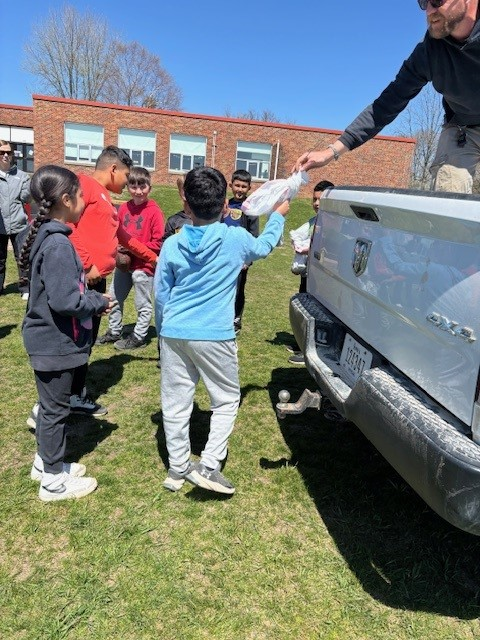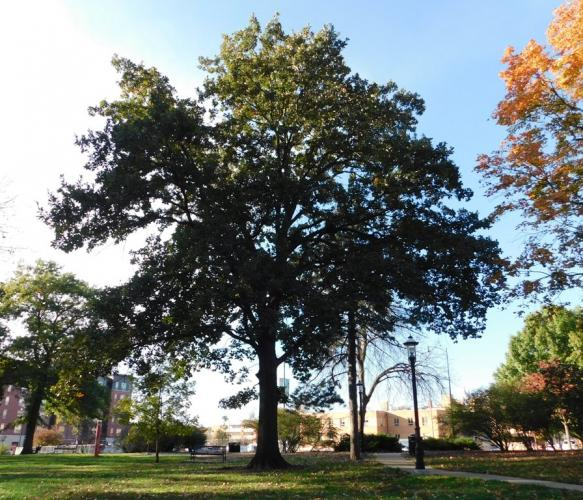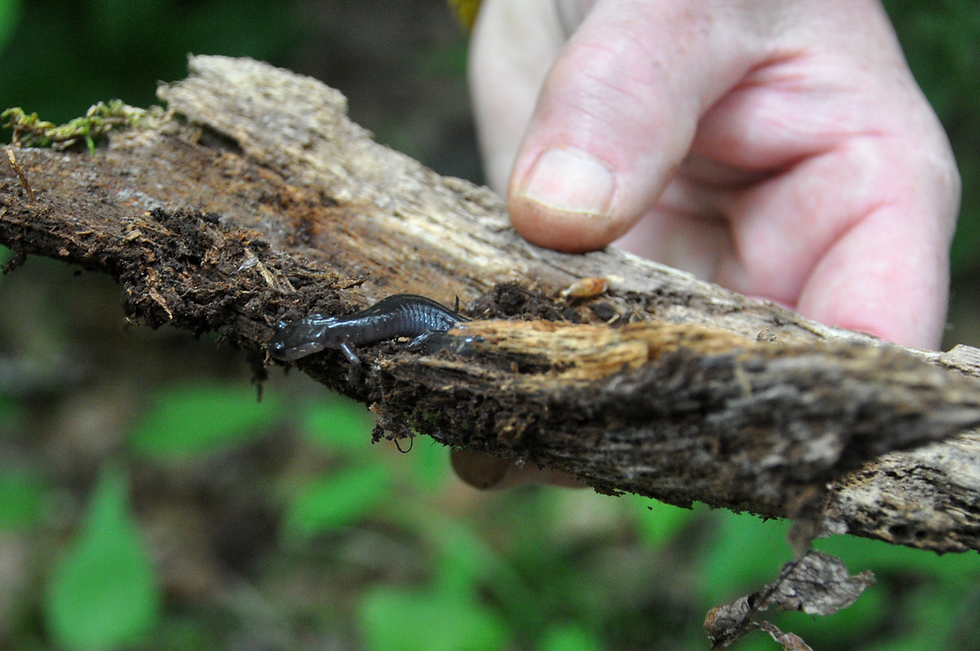The Impossible Selflessness of Tree Planting
- Kenny Slocum

- May 2, 2024
- 5 min read
I spent a good portion of the last few weeks bagging trees, handing out trees, and planting trees. It is unequivocally one of my favorite parts of the calendar; everyone loves trees and I feel like Santa Clause showing up at schools with a truckload of seedlings and a nice big shade tree ready to go into their schoolyards.
After the DNR did away with their free tree seedlings program, I found myself without a way to purchase ~350 tree seedlings to hand out these last few years. Graciously, the Clayton County Soil & Water Commission agreed to fund the tree seedlings.
As he has for decades now, Scott Sindelar from the Ft. Atkinson nursery donated 6-8' tall shade trees for each school to plant on their grounds, asking only for some photos of the planting when we finished. The office in his shop is adorned with dozens of thank you letters from throughout the years.
I seek mainly to demonstrate proper tree planting with this program, but like all naturalists I love to ramble. So I start by asking the kids if they know what Arbor Day is ("what's an arbor?"), and why the SWCD and the nursery so generously donated the trees for them to plant.
"They give us air!" "They can make furniture!" "They give us food!" "They make paper, and paper is what they turn into money!" All true. I let them keep going. "Shade!" "They block wind!" I can see their minds start turning towards the ecological services provided by trees. "They make homes for animals!" "Their leaves turn into dirt," says one particularly precocious youngster.
Slowly but surely, they eventually find the altruism in planting trees. I go on to explain some of the stuff they might miss; stabilizing erodible soils, sequestering carbon (up to a ton per year for some mature trees), even altering the local climate by increasing humidity and, for a big enough forest, precipitation.
The one that most surprises the kids, and many adults, is that trees seem to have genuine healing powers. People heal faster and require less pain medication in hospital rooms with a view of leafy trees than those looking at a brick wall or cityscape. Time spent in the forest can improve mood, pulse rate, and even immune function.
Humans, it seems, have an innate biophilic connection with trees. We just like them, even the ones with little practical or financial utility. We have a propensity to nurture them, to protect them, to use them as landmarks and memorials. The kids, it seems, treat their new seedlings like a pet. I hear them giving their trees names as they shuffle back to class, talking about where they're going to put it and describing their plans to make it grow faster - or at least hope that their dad doesn't accidentally mow it (self-reporting from the students years later indicates this is a significant cause of seedling mortality).
It fascinates me to watch the kids take to their new friend so quickly. Kids are, after all, kind of selfish. It's basic psychology. And once their tree is planted, it's not like they get to take it for walks or play with it - by the time it reaches a good climbing size, most of them will have left their tree-climbing days behind.
Yet they show remarkable enthusiasm. Our affinity for the arboreal shows up very early, and probably has deep evolutionary roots. Which makes sense; if trees make us healthier and provide so many important materials, communities in the ancient past that nurtured and venerated them probably fared better than those that didn't.
But the individual benefit of planting a small tree, even a fast-growing one, is vanishingly small. I still pass by my old junior high school when I'm back home, and I can still see the grove we planted in 7th grade - 10" whips, now approaching 40' in height a few decades later, but still far from where they might end up.
The kids this year got swamp white oak seedlings, a tree that might live for 350 years. Even if all goes well and the tree survives, the kids might only see the first third of its life. It always astounds me to think of how selfless tree planting truly is. In those 350 years, countless birds will roost and nest and forage among its twigs.
The White Oak family can support some 400 species of pollinators, from eggs protected within a gall to adults foraging the nectar of its flowers. The acorns, of which the tree might produce 2 million over its lifespan, will feed everything from blue jays and wood ducks to squirrels and deer.
And even at the end of its "life," it will continue to give. Insects will take advantage of the defenseless wood, and woodpeckers will take advantage of the insects. Songbirds will take advantage of the cavities excavated by the woodpeckers.
Eventually, the tree will fall. On the ground, new guilds of insects will work their way through the crumbling heartwood. Salamanders will keep their skin moist in the spongey wood.
Bacteria and fungi will work through the channels of the ancient vasculature, and eventually, the entire tree will turn to humus, a fertile growing medium for next seedling to start.
That "second life" may last even longer than the first; depending on the climate (and who knows what that may look like in 350 years), the entire process from dead wood to dirt may take another 500 years.
In other words, a tree planted today may make an impact for nearly a millennium going forward - unless it gets turned into lumber or firewood, but that's okay too.
Any way you slice it, the 2 minutes it takes to plant a tree - a native tree - is without a doubt one of the single most generous acts a human being can perform in service of the world around them. With these timely rains, I have a good feeling about the trees that went home with the 4th graders this year - but then, it always feels good to plant a tree.
Looking Back
O.W.L.S. took a trip to the Country View Dairy in Hawkeye for this month's adventure. Dave and Carolee have an amazing story behind their unique business enterprise, and some truly delicious yogurt to boot. Naturalist Abbey hosted a Hiking Stick Workshop, putting to good use a little bit of timber slash to give it it's own second life helping folks explore their local woods. Just in time for mushroom season!
Next she hosted a Birds, Blooms, and Mushrooms hike on May Day, celebrating all the rapturous beauty found in the early spring.
Between all that, field trip season and prescribed fire season united with the early onset of grass growing to pull us in all different directions! Mowing, burning, learning; that does make for a very busy April. Looking Forward
I'll be hosting a Savanna Saunter on May 17th, 5:00 PM at Bloody Run County Park. It's one of my favorite spots on earth and it shows itself off well in mid-May. Come ready for a fairly rugged hike, but we'll be in no hurry. The Turkey River Safari begins May 24th. This wonderful, free program guides you to hidden spots throughout the Turkey River Corridor; pick up kits here at Osborne, the Gilbertson Nature Center, Fayette County Tourism Office, or the Clayton County Development Group. O.W.L.S. will take a trip to the Norman Borlaug boyhood home on May 30th.











Football history comes alive because Retro Bowl 26 in the middle of its retro pixel world lets fans relive the NFL with a fresh twist on classic visuals.